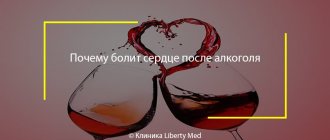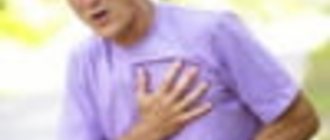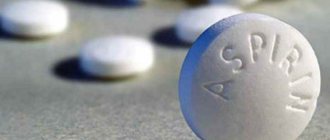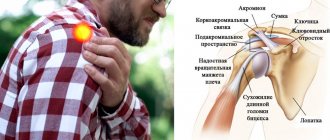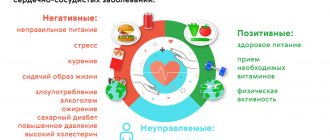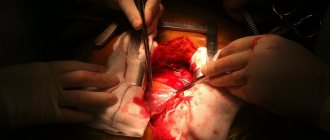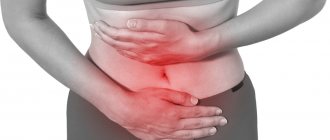Sleep disorders can be classified as conditions that are familiar to almost every person. Some people experience insomnia episodically when they find themselves in unusual conditions or experience acute stress. As a result, they have difficulty falling asleep or their sleep becomes superficial and does not help restore strength. After returning to a familiar environment (when the stress is over), the quality of sleep is usually restored, and the problem is forgotten until the next time. But there are those who are exhausted by a long lack of night rest - they have to visit a doctor and undergo treatment. Experts often recommend taking sedatives or sleeping pills for sleep disorders. Drug therapy is indicated if a person has sleep-related behavioral disturbances and/or severe depressive and anxiety symptoms1.
Causes of sleep disorders
When treating chronic insomnia or other forms of sleep disorders with various medications, it is important to determine the reason why the disorder developed. Among the most common factors identified in people who consult a doctor with complaints of insomnia are the following.
Stress. Tense relationships in a team, the need to withstand the “career race”, a high level of professional or personal responsibility and much more can cause chronic stress and, as a result, the development of insomnia. In addition, this condition in adults can be caused by other circumstances: family quarrels, divorce, litigation, financial difficulties, change of place of residence, loss of property, health problems, etc.
Non-compliance with the daily routine. Maintaining natural biorhythms is important for quality sleep. Sleep is a state that begins gradually with the slowing down of some processes in the body and the activation of others. So, when darkness sets in (that is, in the absence of light stimuli), changes occur in the human body that serve as a signal for the transition to sleep. If you ignore biorhythms (working night shifts, the habit of sitting at the computer at night, etc.), these mechanisms are disrupted and sleep problems may gradually develop. Moreover, even returning to normal mode does not always produce the expected effect. The time it takes to fall asleep can be several hours.
Taking certain medications. Insomnia is often caused by the use of the following medications: antihypertensive drugs (alpha and beta blockers), decongestants, antiepileptics, respiratory drugs (theophylline), hormones, etc.
Bad habits. This category includes all factors that in one way or another negatively affect the functioning of internal organs and the psyche. Taking substances that have a stimulating or depressing effect (nicotine, alcohol, caffeine, etc.), the habit of having a large dinner before bed, a sedentary lifestyle of adults and other factors can desynchronize the mechanisms responsible for sleep and its quality.
Some diseases. Insomnia is often caused by symptoms of some disease. These may be breathing problems due to ARVI, joint pain due to arthritis, headache due to hypertension, etc. Such symptoms can acquire the properties of distractions that interfere with sleep, and the underlying disease that causes such symptoms can sometimes negatively affect biochemical processes, responsible for sleep.
Negative environmental factors. The conditions in which you fall asleep are very important for the quality of your sleep. Therefore, with frequent or constant exposure to irritants in the form of bright light, increased noise levels, an uncomfortable bed, etc., falling asleep becomes increasingly difficult for an adult, and chronic insomnia may develop over time.
Overdose
Possible with frequent or long-term use of the drug, which is associated with the accumulation of its components. long-term and constant use can cause dependence, withdrawal symptoms, and psychomotor agitation. Abruptly stopping the drug may cause withdrawal symptoms.
Symptoms of overdose: respiratory depression, even stopping; depression of the central nervous system, confusion, dizziness, ataxia, drowsiness, even coma; depression of cardiovascular activity, including rhythm disturbances, tachycardia, decreased blood pressure, up to a collapsed state; nausea, weakness, decreased body temperature, decreased diuresis.
Treatment: symptomatic.
Symptoms of sleep disorders
Many people are mistaken in believing that sleep disorders are necessarily associated with its complete absence or inability to fall asleep without sleeping pills or sedatives. Insomnia has many more manifestations, and it can develop so imperceptibly and gradually that a person sometimes does not even connect the state of chronic fatigue, apathy, and decreased tone with how and how much he sleeps. Therefore, it is important to pay attention to the following symptoms that indicate sleep problems.
- Difficulty falling asleep. It can take more than an hour from the moment you get into bed until you fall asleep. This time is not reduced even if you are physically tired.
- The desire to sleep disappears after you go to bed, although it was clearly felt before.
- During sleep, you hear everything happening around you.
- When you try to sleep, you begin to be disturbed by heat, cold, an uncomfortable bed, any sensations in your body - any factors that did not bother you before.
- Even if sleep comes quickly, after a short period of time you wake up and can no longer fall asleep.
- In the morning there is no feeling of freshness and vigor, and during the day you are haunted by drowsiness and lack of energy.
- Superficial sleep, with frequent and causeless awakenings (not related to the desire to drink, go to the toilet, wrap yourself more tightly in a blanket, etc.).
These are the main symptoms of insomnia, which can be supplemented by others (for example, irritability, mood swings, lack of appetite or, conversely, bouts of insatiable hunger, etc.).
Pain syndrome during an angina attack
M.V. KUZNETSOVA
, Candidate of Medical Sciences, Head of the Day Hospital Department, Doctor of the Highest Category,
State Research Center for Preventive Medicine
Coronary heart disease (CHD) has been the main cause of mortality in many economically developed countries for many years. Currently, cardiovascular diseases (CVD) play a decisive role in the evolution of overall mortality in Russia. Mortality from CVD in Russia in 2013 was 857 cases per 100 thousand inhabitants. Of this number, almost 50% are deaths from ischemic heart disease. The problem of treating and alleviating the clinical manifestations of these diseases is one of the priority issues of modern cardiology.
IHD occurs in both acute and chronic forms. This is sudden coronary death, angina pectoris (tension, unstable, new onset, progressive. Early post-infarction or post-operative, spontaneous - vasospastic, variant, Prinzmetal), silent myocardial ischemia, cardiac X-syndrome - microvascular angina, acute myocardial infarction, post-infarction cardiosclerosis, cardiac failure, rhythm and conduction disturbances.
Statistics show that the most common type of coronary artery disease is angina pectoris (the name of the disease comes from the Greek words “stenos” and “kardia”, which literally translates as narrowing or compression of the heart). It can be stable and unstable. A distinction is made between angina pectoris, which occurs when psychophysical stress increases significantly, and angina pectoris at rest. A dangerous variant of the course is “silent” angina, when the typical pain syndrome is absent in the clinical picture, the patient complains of a feeling of numbness in the arm, shortness of breath during physical activity.
According to the State Research Center for Medical Sciences, in the Russian Federation, almost 10 million of the working-age population suffer from coronary artery disease, more than a third of them have angina pectoris. The incidence of angina increases with age: in women from 0.1–1% at the age of 45–54 years to 10–15% at 65–74 years, in men - from 2–5% at 45–54 years to 10–20% at 65–74 years old. In most European countries, the prevalence of angina pectoris is 20,000–40,000 per 1 million population. According to the Framingham study, angina pectoris is the first symptom of coronary artery disease in men in 40.7% of cases and in 56.5% in women.
As shown by the international study ATP-Survey (Angina Treatment Patterns), conducted in 2001 in 9 European countries (including 18 centers in Russia), among Russian patients, patients with class II–III angina pectoris predominated. It is important that in the population only about 40–50% of all patients know that they have the disease and receive appropriate treatment, while in 50–60% the disease remains unrecognized. Patients diagnosed with stable angina die from coronary artery disease 2 times more often than those without this disease. Data from the State Research Center for Medical Sciences state that men suffering from coronary artery disease live on average 8 years less compared to those who do not have this pathology.
According to the results of the Framingham study, in patients with stable angina, the risk of developing non-fatal myocardial infarction and death from coronary artery disease within 2 years is respectively: 14.3 and 5.5% in men and 6.1 and 3.8% in women.
Angina occurs when the work of the heart and the myocardial oxygen demand exceed the ability of the coronary arteries to supply the corresponding areas of the myocardium with a sufficient amount of oxygenated blood. It is believed that pain during angina pectoris is a direct manifestation of myocardial ischemia, leading to the accumulation of under-oxidized metabolites in the heart muscle. As myocardial ischemia develops, the pH of the blood in the coronary sinus decreases, intracellular potassium is lost, and instead of lactate being utilized, its increased production begins. Pathological changes in the ECG appear, the mechanical performance of the ventricles is disrupted. During an attack of angina, diastolic pressure in the left ventricular cavity often increases, sometimes so much that pulmonary congestion occurs or shortness of breath develops.
The main factors determining myocardial oxygen demand are heart rate (HR), systolic tension or systolic blood pressure and myocardial contractility. An increase in any of these indicators against the background of reduced coronary blood flow can cause an attack of angina. Thus, physical stress in a patient with a critical degree of coronary artery stenosis causes an attack of angina pectoris, which is relieved with rest. During an attack that occurs spontaneously at rest, the subjective sensation of pain is usually accompanied by some increase in heart rate and an increase in blood pressure, sometimes significant. If the attack is not eliminated, these shifts provide the basis for the inclusion of potentially dangerous biofeedback: the higher the blood pressure and heart rate, the greater the discrepancy between the myocardial oxygen demand and the degree of its satisfaction.
Angina pectoris in most patients is caused by a critical decrease in the lumen of the coronary arteries due to atherosclerosis.
The course of angina pectoris largely depends on the severity and rate of progression of coronary artery disease underlying coronary insufficiency. In some cases, the functional class of angina pectoris may remain unchanged for many years, in others there is a slow but constant increase in symptoms. Angina pectoris of any functional class, as well as one that arises for the first time, can, for reasons that are not always known, suddenly acquire a rapidly progressive course and end in myocardial infarction.
The most typical manifestation of angina is discomfort or pain, which forces the patient to see a doctor. The characteristics of discomfort associated with myocardial ischemia (angina) can be divided into four categories: location, nature, duration, relationship with stress and other aggravating and eliminating factors.
With angina pectoris, a painful attack occurs during physical (sometimes emotional) stress and usually goes away within 1–2 minutes after its cessation. The duration of a severe attack can reach 20–30 minutes; with a longer duration, focal dystrophic or necrotic lesions of the myocardium usually develop. In the vast majority of cases, the pain is localized deep behind the sternum, most often at the level of the upper third of the sternum. Sometimes the area of most severe pain is shifted slightly to the left or right of the midline. Patients define the pain as squeezing, pressing, sometimes as aching, bursting or burning. The intensity of pain varies: from difficult to bear to barely pronounced, comparable to a feeling of discomfort. Irradiation of pain is not always observed; in typical cases, pain radiates to the left shoulder, left arm, shoulder girdle (right-sided irradiation is less typical) or to the neck, lower jaw, interscapular space. Rarely, atypical irradiation of pain is observed - in the epigastrium, the left half of the celiac region. When an attack occurs, the patient usually freezes; if the pain occurs while walking, he stops. More often this is walking uphill, on an incline, or against the wind, or in cold weather. Objectively, during a severe attack, hyperemia or pallor of the face, the appearance of droplets of sweat on it, sometimes increased sweating on the torso, slight tachycardia, a slight increase or decrease in blood pressure, and dilated pupils may be observed. Shortness of breath may accompany angina. Chest discomfort may also be accompanied by symptoms such as fatigue or dizziness, nausea, burning, restlessness, or a feeling of doom. Dyspnea may be the only symptom of stable angina, which can cause difficulty in verifying the diagnosis and require differential diagnosis with bronchopulmonary disease.
Worsening symptoms after eating a large meal or waking up in the morning are classic signs of angina. Angina can be reduced by further exercise (walk-through angina) or by a second exercise (warm-up angina). The threshold for angina and therefore symptoms can vary significantly from day to day and even within a single day.
It should be noted that there are some difficulties in verifying the diagnosis of angina pectoris. Thus, in older people, only 50% of cases are diagnosed with the classic form of stable angina. Most often, the equivalent of pain is shortness of breath. Decreased physical activity is the reason why patients do not reach the threshold when pain occurs. An important role in diagnosis is played by memory loss and the presence of concomitant diseases. Women often experience cardialgia, which, coming to the fore, makes it difficult to diagnose angina and determine its functional class. 50% of patients with diabetes do not have the classic form of stable angina, and the disease is often asymptomatic. Chronic refractory angina is severe angina, refractory to full drug therapy, occurring in patients for whom intravascular interventions or coronary bypass surgery are contraindicated or difficult. Refractory angina corresponds to class III–IV angina according to the Canadian Society of Cardiology classification.
There are several clinical forms of stable angina: early morning angina, occurring between 6 and 11 a.m., caused by activation of the sympathetic nervous system with increased heart rate and increased blood pressure; starting angina due to increased myocardial oxygen demand without prior inclusion of collaterals; angina pectoris after digestion, associated with redistribution of blood and “robbing” the heart; “cold” angina, due to spasm of peripheral arteries; angina pectoris in the supine position (decubitus) as a result of increased venous return and increased preload on the heart with increased myocardial oxygen demand; angina pectoris that occurs after stressful situations when the sympathetic nervous system is activated; “tobacco” angina (tobacoangina), caused by vasospasm, activation of the sympathetic nervous system with an increase in heart rate and blood pressure; angina pectoris of the “second” breath - overcoming the pain syndrome and continuing the load due to the production of substances in the ischemic myocardium that can increase coronary blood flow; “static” angina, caused by a sharp static load, the mechanism of which is the rise of the diaphragm, the rotation of the heart, an increase in intrathoracic pressure, an increase in venous return of blood and preload on the heart.
There are also typical and atypical angina. With atypical angina, most often the chest pain is similar to that with typical angina: the same localization and reaction to nitrates, but without a clear connection with provoking factors. The pain is often described as resting, starting at a low level of intensity that gradually increases in intensity, persists for 15 minutes, and then slowly decreases in intensity. This characteristic should alert the clinician to the possibility that coronary vasospasm is present. Another atypical presentation is pain, location and characteristics of angina, which occurs during exercise, but stops some time after exercise or can be stopped by taking nitrates. Most often it occurs in patients with microvascular angina. Below is a classification of chest pain.
Traditional clinical classification of chest pain
• Typical angina (proven) - all three complete characteristics are met: - chest discomfort of a typical nature and duration - provoked by physical or psycho-emotional stress - relieved by rest and/or taking nitrates for minutes. • Atypical angina (probable) - the presence of two of these characteristics. • Non-anginal chest pain - the presence of only one or no of the above characteristics
The pain syndrome stops or decreases when the load is stopped. Taking nitrates in the vast majority of cases completely stops the attack within 1-2 minutes.
Thus, the main task of the doctor is to relieve pain.
Currently, a range of nitrates is widely represented on the pharmacological market. Nitroglycerin (glycerol trinitrate) has been used in clinical practice since the second half of the 19th century. But only almost 100 years later, new drugs were created (isosorbide dinitrate, isosorbide 5-mononitrate) and new dosage forms (for intravenous administration, for use in the form of an aerosol, for transdermal use in the form of an ointment, a patch), including forms with a slow release of the drug in the gastrointestinal tract. Active study of the mechanism of action of nitrates led to an expansion of the range of indications for their use and made it possible to establish at the end of the twentieth century that the nitric oxide (NO) molecule plays an important role in ensuring the normal function of the vascular endothelium. It takes part in the regulation of vascular tone, has an antiaggregation effect, inhibits the adhesion and infiltration of monocytes, and inhibits the migration and proliferation of smooth muscle cells in the arterial wall. Impaired endothelial function, including a decrease in NO formation, has also been found in coronary artery disease.
Nitrates are widely used as antianginal agents for various forms of coronary artery disease (angina pectoris, myocardial infarction, etc.). The therapeutic effect of nitrates (nitrovasodilators) is based on the ability to substrate increase the content of nitric oxide, which is an endothelial relaxing factor. This factor stimulates guanylate cyclase, increases the content of cyclic guanosine monophosphate inside the cell and ultimately causes vasodilation. Nitrovasodilators include organic nitrates, as well as sydnonimines (molsidomine) and other nitric oxide donors (amyl nitrite). The most common in clinical practice are organic nitrates (nitroglycerin, isosorbide dinitrate, isosorbide mononitrate). Recently, not only new compounds and dosage forms of organic nitrates, including prolonged action, have been developed, but also the indications for their use have been clarified and expanded. Dosage forms of nitrates ensure penetration of the active substance into the bloodstream through the oral mucosa (tablets, wafers, aerosols), after oral administration (tablets, capsules for oral administration), transdermally, i.e., when applied to the skin (ointments, patches, discs ) or used for injection.
The antianginal effect of nitrates is due to the restructuring of hemodynamics associated with the general vascular effect of the drug, relaxation of the smooth muscles of peripheral vessels under its influence, especially its venodilating effect. Under the influence of nitrates, venous blood flow to the heart decreases, pressure in the right atrium and in the pulmonary artery system decreases, and peripheral vascular resistance decreases. As a result, the myocardium is unloaded, its tension in overcoming the resistance of blood ejection is reduced, energy costs and the need for oxygen are reduced. The resulting decrease in cardiac tension and coronary lytic effect help restore blood flow through the small vessels of the myocardium and improve blood flow in the epicardial coronary arteries. Along with a decrease in ischemia, pain impulses from the ischemic focus gradually disappear and the pain syndrome stops. The effect of nitrates is not limited to the effect on the coronary vessels, they cause dilation of other blood vessels (cerebral vessels, peripheral vessels, abdominal vessels). Nitrate intake can modulate fibrinolysis by changing the ratio in plasma between the two main components of this system - tissue plasminogen activator and its inhibitor, which may be both a consequence of changes in hemodynamics and the result of the inhibitory effect of NO on platelet aggregation and adhesion.
In addition to the use of nitrates as the drugs of choice for the initial treatment of most patients with angina (relief and prevention of attacks), their prescription to patients with a variable threshold for ischemic pain is justified, since they prevent intermittent coronary vasoconstriction in vasospastic angina. For the purpose of relief and prevention of a predicted attack of angina, dosage forms of nitrates that are absorbed in the oral cavity are more often used (Table 1).
| Table 1. Comparison of nitroglycerin (tablets) and Isoket spray | ||
| Properties | Nitroglycerin (sublingual tablets) | Isoket spray |
| Fast absorption | + | +++ |
| Instant effect | + | +++ |
| Duration of action | up to 30 min | up to 120 min |
| Hygiene | — | +++ |
| No special storage conditions | — | +++ |
Isoket spray is an antianginal drug from the group of organic nitrates. Isoket contains an active substance - isosorbide dinitrate - which has vasodilating properties. Isosorbide dinitrate reduces the need of the heart muscle for energy and oxygen, reduces pre- and afterload on the myocardium. In addition, the drug reduces diastolic pressure in the ventricles of the heart, eliminates spasm of the coronary vessels, as a result of which coronary blood flow in ischemic areas of the myocardium is normalized. The drug has a vasodilating effect mainly on the veins, however, when using isosorbide dinitrate, some dilatation of the arteries is also observed. Under the influence of isosorbide dinitrate, the resistance of the pulmonary vessels decreases and the pressure in the pulmonary circulation decreases.
The drug has virtually no effect on heart rate. Promotes the expansion of cerebral vessels. By stimulating the sympathetic nervous system and reducing afterload, it improves systolic function.
The main advantages of Isoket spray, in contrast to an aerosol, are that the drug is supplied from a cylinder (aerosol) by creating excess pressure in it, and extraction occurs by opening the valve. When using a spray, the drug is supplied by mechanically squeezing it out with a micropump piston, while the pressure in the bottle is equal to atmospheric pressure. An important point in the design is that when the piston moves to its original position, the cavity from which the drug is squeezed out is filled with a new portion. This serves as a liquid seal, preventing air from entering the bottle, i.e. the drug in the bottle does not come into contact with the external environment and is not exposed to aggressive factors, the bottle is hermetically sealed, which prevents spraying of the drug into the external environment.
The mechanism of action of the drug is based on its ability to increase the amount of nitric oxide in the vascular endothelium (Fig. 1). NO is necessary for the activation of guanylate cyclase, which is involved in the synthesis of cyclic guanosine monophosphate (cGMP). An increase in cGMP concentration leads to vascular dilatation (due to a decrease in the tone of the smooth muscle layer). A decrease in preload when using isosorbide dinitrate occurs due to a decrease in vascular tone, venous deposition of blood and a decrease in its venous return to the heart. Due to the decrease in venous return of blood to the heart, the pressure on the walls of the left ventricle is significantly reduced and the need for oxygen in the heart muscle is reduced. Direct dilatation of coronary vessels and eccentric coronary stenoses, as well as a slight decrease in their resistance, cause an improvement in myocardial perfusion and oxygen supply without the development of “steal syndrome”.
An increase in tolerance to physical activity was noted in patients suffering from coronary heart disease and angina pectoris taking the drug Izoket spray. Isosorbide dinitrate helps reduce the load on the myocardium, improving the quality of life in patients suffering from heart failure. In addition, by reducing blood flow to the right atrium, the drug reduces pressure in the pulmonary circulation and helps reduce the symptoms of pulmonary edema.
When using the drug in the form of a spray, isosorbide dinitrate is quickly absorbed into the systemic circulation. The active substance is absorbed over the entire area of the oral mucosa, so the therapeutic effect occurs faster than when using the drug in tablet form. The effect of the drug develops within 1–3 minutes after application. The peak concentration of the active substance in the blood is observed 3–6 minutes after application. When using the drug in the form of a spray or aerosol, there is no effect of the first passage of isosorbide dinitrate through the liver. The drug is metabolized in the liver to form pharmacologically active metabolites: isosorbide-2-mononitrate and isosorbide-5-mononitrate. The bioavailability of the drug is about 60–100%, which is significantly higher than the bioavailability of oral forms of isosorbide dinitrate. Excreted by the kidneys in the form of pharmacologically active metabolites, the half-life of isosorbide-2-mononitrate is from 1.5 to 2 hours, isosorbide-5-mononitrate - from 4 to 6 hours.
Thus, Isoket spray has a number of significant advantages for pain relief in comparison with sublingual nitrates (Table 2). It should also be noted that experimental studies on animals did not reveal the teratogenic effect of isosorbide dinitrate.
| Table 2. Comparison of Isoket spray with sublingual nitrates | |
| Isoket spray | Sublingual tablets |
| No passage through the liver | Part of the drug (swallowed) undergoes the first stage of metabolism through the liver |
| Large suction area | Smaller suction area |
| Fast absorption | Longer absorption |
| To achieve the effect, a smaller amount of active substance is required | More drug is required to achieve effect |
| Faster onset of clinical effect | The clinical effect occurs more slowly |
Prompt relief of pain to alleviate the subjective condition of the patient during an attack of angina is the primary task of the doctor. Isoket spray for sublingual use has a rapid onset of action due to the dosage form in the form of an aerosol, has a long-lasting protective effect due to long-acting metabolites, allows for precise dosing of the drug, and has a convenient release and packaging form. Each time you press the sprayer, an equal amount of solution is sprayed in the form of tiny droplets. It easily penetrates the mucous membrane of the mouth and enters the bloodstream in a matter of seconds. When using isosorbide dinitrate in the form of a sublingual spray, the effect of the drug begins after 30 seconds and continues for 120 minutes (2 hours).
Literature
1. Recommendations of the European Society of Cardiology - 2013. 2. Belenkov Yu.N., Oganov R.G. National Guidelines for Cardiology. GEOTAR-Media, 2012. 3. Mazur N. The role of nitrates in the treatment of cardiac patients in accordance with the principles of evidence-based medicine and recommendations for their practical use. Mediasfera, 2007. 4. Zmushko E.I., Belozerov E.S. Medications. St. Petersburg: Peter, 2000. 5. Kosarev V.V. Pharmacotherapy. Samara: Medicine, 1994. 6. Mashkovsky M.D. Medicines: In 2 volumes. T. 1. M.: Novaya Volna, 2002. 7. Sinev D.N., Gurevich I.Ya. A manual for pharmacists. M.: Medicine, 1982. 8. Pharmacological dictionary. Comp. P.M. Fadeeva. M.: Medicine, 2003. 9. Moncada S, Higgs A. The L-arginine - nitric oxide pathway. N Engl J Med 1993, 329: 2002-2012.4. 10. Cohn JN, Archibald DG, Zische S et al. Effect of vasodilator therapy on mortality in chronic congestive heart failure: results of veterans administration Cooperative Study. A comparison of enalapril with hydralazine-isosorbide dinitrate in the treatment of chronic congestive heart failure. N Engl J Med 1991, 325: 303-310. 11. Horowitz JD. Tolerance induction during therapy with long — acting nitrates: how extensive is the “Collateral demage”? Cardiovasc Drugs Ther 2004, 18:1:11-12.16. 12. Kosmicki MA, Szwed H, Sadowski Z. Antiischemic response to sublingual nitroglycerin during oral administration of isosorbide dinitrate in patients with stable angina pectoris: when does cross tolerance occur? Cardiovasc Drugs Ther 2004, 18:1:47-55.17. 13. Webb DJ, Muirhead GJ, Wulff M et al. Sildenafil citrate potentiates the hypotensive effects of nitric oxide donor drugs in male patients with stable angina. J Am Coll Cardiol 2000, 36:25-31. 14. Doucet S, Malekianpour M, Theroux P et al. Randomized trial comparing intravenous nitroglycerin and heparin for treatment of unstable angina secondary to restenosis after coronary artery angioplasty. Circulation, 2000, 101: 955-61. 15. Bussmann WD, Passek D, Seidel W, Kaltenbach M. Reduction of CK and CK-MB indexes of infarct size by intravenous nitroglycerin. Circulation, 1981, 63: 615-22.
Consequences of sleep disorders
People suffering from sleep disorders often mistakenly perceive their condition as an independent problem that can be solved with the help of medications. And they often don’t even realize that many chronic diseases or organ dysfunctions are directly related to insomnia. Thus, it has already been established that diseases of the cardiovascular system, depression, and metabolic disorders are closely related to low quality sleep or its short duration. Chronic insomnia not only contributes to the deterioration of a person’s well-being, but can also lead to the development of serious diseases.
One of the most insidious complications of acute insomnia is its transition to a chronic form. This is often due to the so-called pathological circle. A person who suffers from sleep disorders, even after eliminating the causes of this condition, acquires a fear of insomnia. He expects in advance that the next night will bring him further suffering and thus puts himself in a state that prevents him from falling asleep. Thus, over and over again his worst expectations are justified, and insomnia becomes chronic. In such cases, the doctor may recommend taking a sedative for sleep disturbances that recur for several days in a row or regularly under certain circumstances. Treatment of chronic insomnia should include comprehensive measures: from eliminating the cause of sleep disturbances to treating complications of this condition.
Important!
Despite resolution of a stressful event, insomnia can sometimes persist and lower a person's stress threshold. Even acute, seemingly adaptive insomnia in some cases requires mandatory treatment to prevent its transition to a chronic form, the development of disorders, and also to improve the patient’s quality of life.
Note!
Description of the drug Corvalol table. No. 30 on this page is a simplified author’s version of the apteka911 website, created on the basis of the instructions for use.
Before purchasing or using the drug, you should consult your doctor and read the manufacturer's original instructions (attached to each package of the drug). Information about the drug is provided for informational purposes only and should not be used as a guide to self-medication. Only a doctor can decide to prescribe the drug, as well as determine the dose and methods of its use.
Corvalol PHYTO in the treatment of sleep disorders
Corvalol PHYTO is a combination drug that contains natural herbal ingredients. For sleep disorders, this remedy can have a calming effect, reduce spasms, and also eliminate unpleasant symptoms of the cardiovascular system that are not associated with organic diseases (by slowing down the rhythm and increasing the strength of heart contractions)2. The medicine has moderate antihypertensive properties. Depending on personal preferences, you can choose the most convenient form of release of the drug and take drops or tablets for sleep disorders. The action of Corvalol PHYTO can help get rid of increased excitability and neurosis-like conditions that lead to sleep problems. Usually, tablets and drops are not addictive if you strictly follow the doctor’s instructions regarding dosage and duration of treatment. ________________
1 Vorobyova O.V., Doctor of Medical Sciences, Professor. Acute (adaptive) insomnia: a therapeutic dilemma. First Moscow State Medical University named after. I. M. Sechenov.
2 According to the instructions for medical use of Corvalol PHYTO in tablets and drops.
Interactions
Drugs with central inhibitory action enhance the effect of Corvalol.
The presence of phenobarbital in the drug can induce liver enzymes and, accordingly, can accelerate the metabolism of certain drugs that are metabolized by these enzymes (including indirect anticoagulants, cardiac glycosides, antimicrobial, antiviral, antifungal, antiepileptic, anticonvulsant, psychotropic, oral hypoglycemic, hormonal, immunosuppressive , cytostatic, antiarrhythmic, antihypertensive drugs, griseofulvin, glucocorticoids, oral contraceptives) since their effectiveness will be reduced as a result of a higher metabolic rate.
Corvalol enhances the effect of analgesics, local anesthetics and drugs that depress the central nervous system.
MAO inhibitors prolong the effect of phenobarbital. Rifampicin may reduce the effect of phenobarbital.
The simultaneous use of phenobarbital with gold preparations increases the risk of kidney damage.
With long-term combined use of phenobarbital with NSAIDs, there is a risk of gastric ulcers and the risk of bleeding.
The simultaneous use of phenobarbital with zidovudine increases the toxicity of both drugs.
When combined with valproic acid, its effect is enhanced.
When used simultaneously with methotrexate, the toxicity of the latter increases.
Alcohol enhances the effect of the drug and also increases its toxicity. While taking the drug, you should avoid drinking alcohol.
